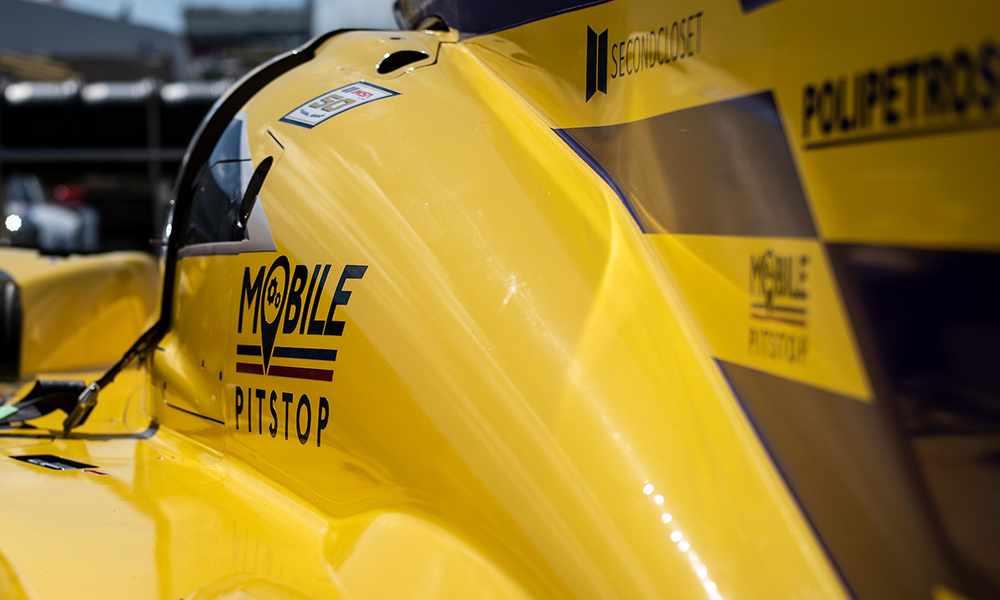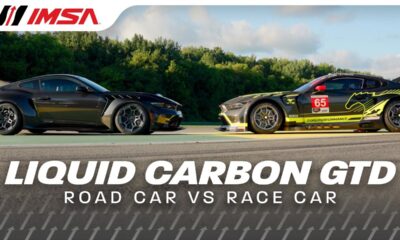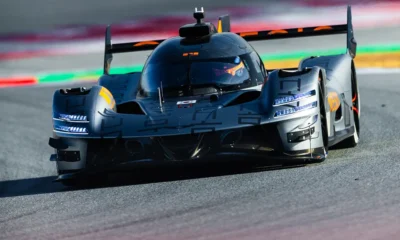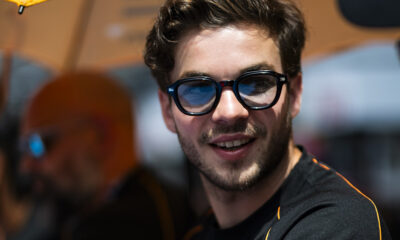
Photo: Mike Levitt/IMSA
High-voltage hybrids appear to be the favored option among manufacturers following the latest round of DPi 2.0 meetings to shape the next-generation top class prototype regulations.
Set for a 2022 debut in the IMSA WeatherTech SportsCar Championship, significant progress is understood to have been made in the latest steering committee meeting held last week at IMSA’s headquarters in Daytona Beach, Fla.
Sportscar365 understands that the meeting, which saw more than 40 industry representatives in attendance, was focused on hybrid technology and an overview of the ancillary systems and procedures that teams, tracks, operators and corner workers will have to adapt to.
While IMSA previously confirmed the adoption of hybrids, it has yet to detail the level of electrification the top-level class will utilize, which has had mixed views among manufacturers.
However, last week’s meeting, led by Matt Kurdock, IMSA’s director of technical systems, is understood to have been focused on the potential use of larger hybrid units.
Suggestions of a 400-volt system, providing in the range of 70-90 kW (90-120 hp) of electric power, is believed to have been in discussions, a move that would provide a meaningful level of boost that could be deployed in various yet-to-be-determined methods.
Despite the increased power over a low-voltage system, it’s understood IMSA has still targeted a $100,000 cost-cap for the spec hybrid system, which could be put up for tender.
A decision on the hybrid’s specification is understood to not yet have been taken but could come at the next meeting, which is scheduled for early August prior to its Road America event.
While praising IMSA’s technical staff in the “well-organized and executed” meeting, IMSA President Scott Atherton declined to comment on any specifics discussed.
“The process that has been announced, the schedule that has been announced, the protocols that are being deployed here are going to result in the best possible set of regulations that we can have regarding the next generation,” Atherton told Sportscar365.
“It was an incredibly beneficial meeting for IMSA. What was different was the level of engagement and active dialogue back and forth.
“It wasn’t just IMSA presenting information. There was a significant amount of response and healthy discussion.”
Privateer Teams Express Concern on Potential Rising Costs
While manufacturers appear to be on board for the increased electrification, several current DPi team owners, including Wayne Taylor, have expressed concerns on potential rising costs for customer teams.
“It’s a very big worry for me,” Taylor told Sportscar365. “As it may look from the outside that we’re a factory program, we’re not.
“We are customers just like every other Cadillac [DPi]. But we’re racing against Honda, which is Penske and factory, and we’re racing against Mazda, which is factory with Joest.
“Quite honestly, the budgets have got to such a point that at the moment, it’s almost impossible to keep going at this level.
“We’re spending $5.6 million for ten races, which is absolutely absurd.
“A team like mine will not exist unless a manufacturer calls up and says they’ll pay for everything.
“If I don’t get that manufacturer call, then I can’t see how we will compete after 2021.”
Lamborghini, which is among the nearly dozen manufacturers represented in the meetings, has also expressed caution on excessive costs around hybrid systems.
As revealed by Sportscar365, the Italian manufacturer is looking to enter the DPi ranks in 2022, but only with a customer-based model similar to Cadillac’s current program.
“Hybrid is the future, that’s clear,” Lamborghini Head of Motorsport Giorgio Sanna told Sportscar365.
“We have very good expertise in the low-voltage in terms of technology in the company. But in any case, we’re open to discuss any opportunities.
“What is very important is to have attention on the budget cap and the budget needed for this kind of technology. If it’s managed in the right way, we’re open to any kind of opportunity.”


























